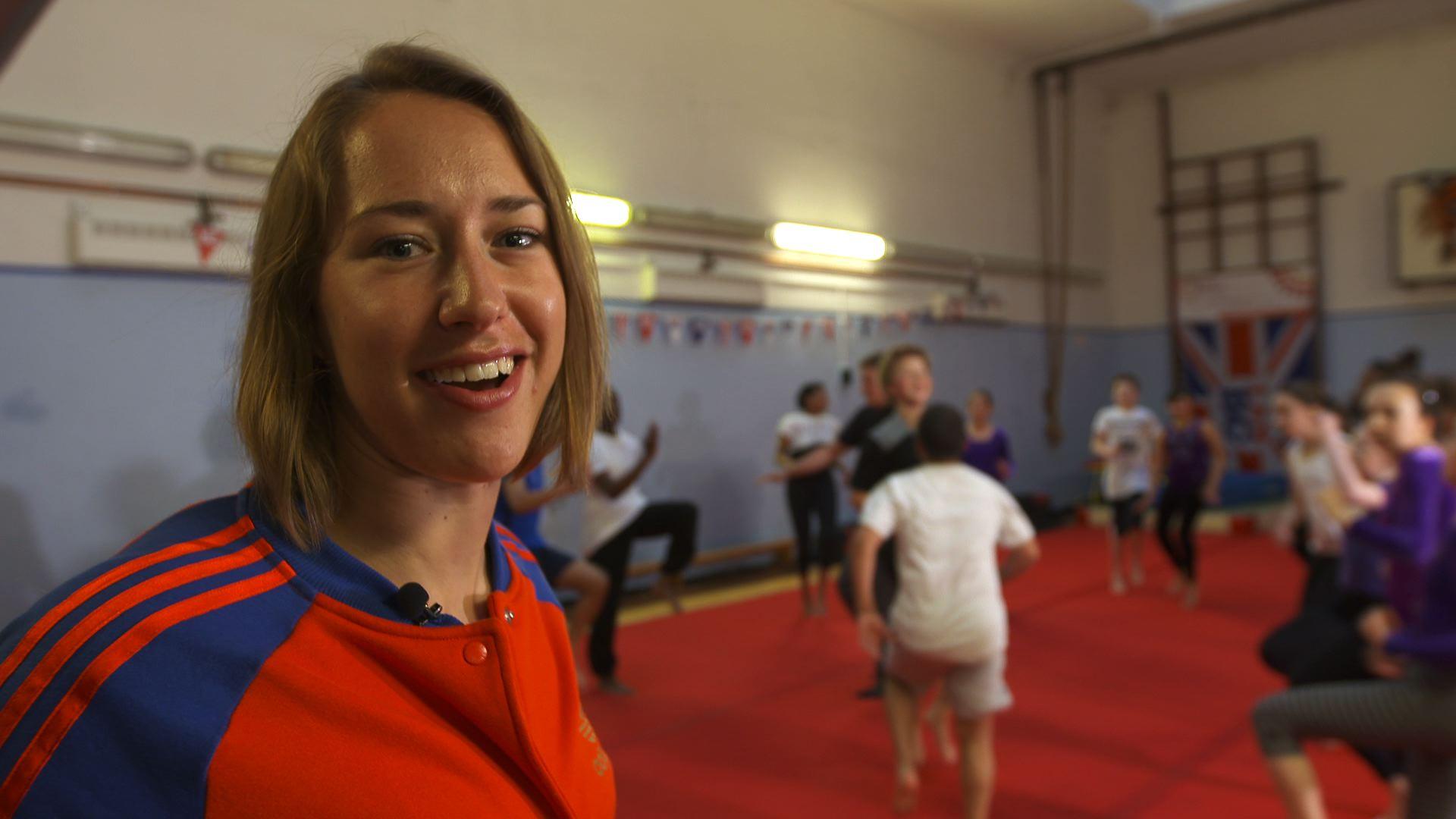Get Inspired: GYMNASTICS (TRAMPOLINE)
- Published
Take a look at our Gymnastics activity page to get a full description of all the different types of gymnastics to choose from.
Baker inspire
From the circus tent to the Olympic hall, trampoline has travelled a considerable distance from its 19th century genesis.
The top competitors in the world are still genuine high-flyers though, reaching heights of up to 10 metres during their routines.
Although it forms part of the gymnastics programme it shares some similarities with diving in terms of the suppleness and skill needed to compete at the top level. The two sports also share the same terminology - back-flips and half-pikes feature in both.
Lee Brearley and Jaime Moore were the first Britons to compete when trampoline made its Olympic debut at the Sydney 2000 Games.
Britain had previously produced world men's champions Paul Luxon (1972) and Stewart Matthews (1980) as well as Sue Shotton, who took the 1984 women's world title.
Why is it good for you?
Gymnastics requires strength, mobility, endurance, flexibility, body control and coordination.
The high level of physical fitness needed to excel helps encourage a healthy lifestyle, including regular physical activity and eating a well-balanced diet.
The wide range of movements involved in trampolining works every muscle in the body and burns approximately 410 calories per hour.
Jumping on the trampoline - or rebounding - has been discovered by NASA scientists to be up to 68% more effective exercise than jogging.
The effort of rebounding develops both upper and body strength without putting undue strain on joints or muscles, thus reducing the risk of injury.
Get involved
Gymnastics is a breathtaking sport featuring a range of disciplines such as artistic, trampoline, acrobatics, aerobics and tumbling. It is enjoyed by an estimated four million people in the United Kingdom.
Trampoline explained (Part 1)
There are more than 1,600 gymnastic clubs in the country and you can find the one closest to you by using the British Gymnastics club finder., external You only need to buy your own sports kit as the different apparatus and equipment can be found in clubs.
An extensive range of training programmes for people of all abilities and ages are available in sport centres, gyms, schools, universities and colleges.
British Gymnastics' GymFusion scheme, external has seen over 2000 performers take part in the non-competitive, show style festivals, with 11 events set to set to take place across the UK in the future.
Contact your local British Gymnastics development officer, external to discover information on how you can get started, with the GymMark scheme, external ensuring the highest standards are adhered to throughout the UK.
Further information can be found on the English Gymnastics, , externalWelsh Gymnastics, , externalScottish Gymnastics, external and Gymnastics Northern Ireland, external websites.
History
A French tumbler named Du Trampolin had the idea of adapting safety nets used by aerial artists in his act.
This rudimentary trampoline was developed into the modern apparatus we know today during the 1930s by American gymnast George Nissen, who thought it would be a useful training tool for tumblers. It was subsequently used in the training of fighter pilots and astronauts.
Gradually it developed into a sport of its own, initially known as rebound tumbling, which Essex teacher Ted Blake brought to these shores in 1950. Great Britain staged the first World Championships in 1964.
Nissen was present in Sydney in 2000 as trampoline finally became an Olympic sport.
More on the IOC website, external
Are you inspired to try Trampoline Gymnastics? Or maybe you are a keen enthusiast already? Get in touch and tell us your experience of the activity by tweeting us on @bbcgetinspired, external or email us on getinspired@bbc.co.uk., external
See our full list of activity guides for more inspiration.
- Published15 May 2014
